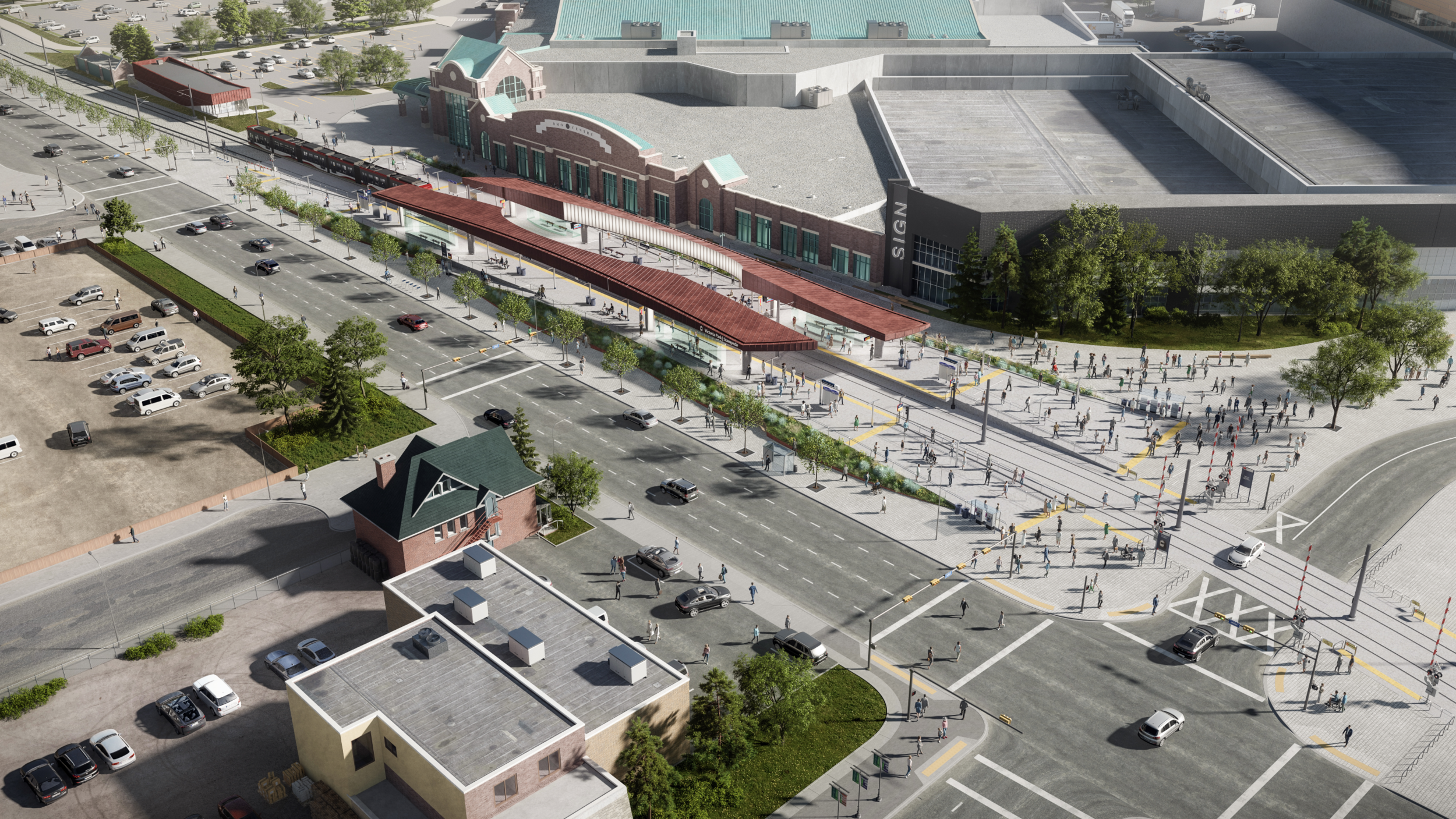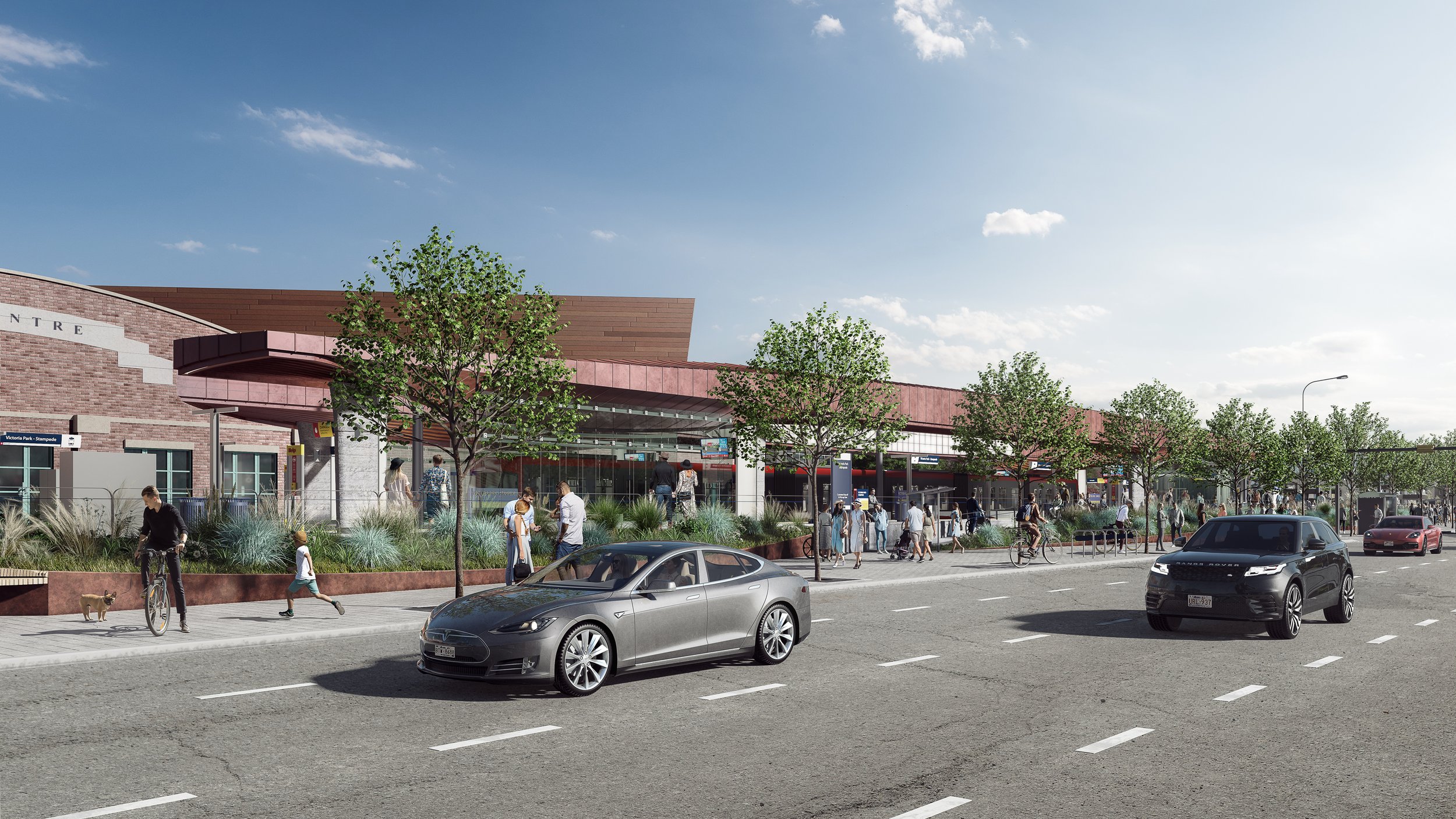Mountain Man
Senior Member
Have we seen what will replace that station? I'm sure we have but can't recall...
Yes we have: https://www.calgarymlc.ca/17th-avenue-extensionHave we seen what will replace that station? I'm sure we have but can't recall...




or at least on street parking to slow things down, just no need for four lanes.Annoying that the big images aren't directly accessible from the website




Wish the city had the balls to keep Macleod 3 lanes forever.
I don't have a photo, but the canopy will probably be the same copper material they installed on the new utility building north of the station. Think West LRT after the patina sets in.Are the materials supposed to be similar to the BMO Centre? That would be pretty cool if they were, even though the materials don't look as good as the BMO renders...
These look really great.... but I remain skeptical of this entire project and the 17 Avenue extension. I struggle with the trade-offs and who is benefitting from this whole new project.

Wish the city had the balls to keep Macleod 3 lanes forever.
And that's the problem - the factors that made the old station unloved and have the issues are not really changing that much. Fast forward 20 years with our now old new station - has any of these things changed by 2042?
If that was all that we are trading off, the station investment would be hard to tell the value of - a refreshed station is nice, but hard to say if it actually makes Stampede Park more popular or the LRT more attractive. Many LRT users don't care if it's noisy or weather protected - as long as the train works. Maybe the shiny/new factor is all that we really need to solve lots of problems.
- station will still be super event-dependent (huge crowds occasionally, empty much of the rest of the time).
- station is still on the far side of a 4 lane one-way arterial separated from the major growth and activity of the Beltline.
- station will still be just as noisy from MacLeod nearby.
- guessing from the rendering it will probably a bit more windy and a bit less weather protected (this is partly intentional to make it less hospitable to discourage camping out and the anti-social behaviours that the old station became known for).
But that's not all this project is doing. By adding the at-grade crossing for the 17 Ave extension, this "transit" investment is ironically expected to both make transit both slower and less reliable. Every passenger on the south leg of the Red Line will have a slightly slower trip now, as the at-grade crossing requires slower operations at all times than existing conditions with no crossing. There will be more collisions and delays from the inevitable street-level interactions over time too. On major event days, "operational" measures will have to be sufficient (e.g. put out a few security guards to stop crowds of hundreds of pedestrians from blocking the train). Even if you have really good police and security and really obedient 20,000 hockey fans - I remain skeptical that this approach will not inevitably lead to further LRT delays.
Okay - so the LRT system's efficiency or reliability isn't a winner here. Who is the winner?
- Pedestrians can now cross at-grade to the park which is great and more efficient - true, but I hope that all these new circulation patterns don't trigger any traffic engineering model to suggest a wildly long signal length on Macleod Trail NB or an advance-turn green ahead of the pedestrians from 17th Ave to Macleod NB as both would cut into that benefit. Previously pedestrians had to go up and over - kind of a pain, and sketch on the ramps when not busy during the event days - but not particularly slower than waiting at the long light to cross Macleod.
- Stampede can have improved connectivity to help achieve it's long-range plans to become a "year-round destination" - except all areas south of 17th Ave extension are planned to remain as parking lots forever, reaffirmed in the most recent planning exercises as recently as a few years ago. Most of the areas to the north are planned to be unchanged and the future-former Saddledome site is a long-term parking lot in the plans. So what are we connecting to exactly?
- It'll be super easy for all the major conventions to access the station and help sell events here - sure, but is it really that much easier than it is now to access the LRT? There's a grade-separated overpass that connects right into the convention centre. Does this new design and interaction with the LRT actually attract more events or make a meaningful difference for the convention crowd? Surely the $500M fancy new convention centre is enough to sell itself right?
- Extending 17th Avenue on the east end finally will stop the dead-end and trigger nearby development - maybe, but the construction and investment signal has already happened. Any new developments that weren't already in the pipeline from before any of this new station / 17 Ave extension was thought of? Anything triggered by this investment directly?
This crosses my mind every time I ride that section - why, why, oh why didn’t they burry it ?It's unfortunate that the section of LRT between 12th ave and 25th ave wasn't buried when they built it.
The initial renderings showed a large portion of the wall being covered by a grass hill with plantings. It would be a shame if that has disappeared in favour of the bare metal look and some wheat.Yeah took my dog down there today…. I’m surprised at how awful the wall looks. I thought they were going to at least cap the steel with something. It just looks sooo unfinished.
Yep, it really needs those shrubs to grow dnd overtake the wall lol.Yeah took my dog down there today…. I’m surprised at how awful the wall looks. I thought they were going to at least cap the steel with something. It just looks sooo unfinished.




